The idea of retiring in Europe sounds like something reserved for the wealthy or the wildly lucky. But it’s actually more attainable than most people realize. The truth? You might not need a million-dollar nest egg, just your monthly Social Security check.
According to the Social Security Administration, the average monthly benefit for retired workers in 2025 is projected to be around $2,008. So, let’s round it to $2,000 a month, a decent benchmark.
In most parts of the U.S., that might barely cover rent and utilities. But in parts of Europe? That can stretch shockingly far.
Here’s the catch that most “retire abroad” guides skip over: affordability isn’t just about cheap wine or €3 croissants. The real obstacle is paperwork, specifically, the visa. Some countries make it easy, others… not so much.
So if you’re thinking about spending your golden years sipping espresso in Lisbon or walking the beaches of Spain, you’ll need to know where it’s actually possible to live legally on your Social Security income.
That’s what this list is about. We’ve rounded up 11 beautiful, affordable, and visa-friendly European cities where you can truly retire on your Social Security alone.
Note: All figures are estimates in USD based on 2025 data and currency rates, which are subject to fluctuation.
City, Country
Est. Monthly Cost (Single, Excl. Rent)
Est. 1-BR Rent (City Center)
Visa Income Req. (Monthly)
Viable on Avg. SS?
Lagos, Portugal
~$800
~$950
~$985
Yes
Coimbra, Portugal
~$700
~$480
~$985
Yes
Valencia, Spain
~$800
~$1,100
~$2,580
No (Couples/High Earners)
Ljubljana, Slovenia
~$900
~$910
~$1,000
Yes
Split, Croatia
~$750
~$790
Flexible (Sufficient Funds)
Yes
Prague, Czech Rep.
~$850
~$820
~$5,000 (Savings Proof)
Yes
Krakow, Poland
~$750
~$850
~$255
Yes
Montpellier, France
~$1,000
~$930
~$1,500
Yes (Tight Budget)
Brasov, Romania
~$650
~$500
~$1,930
Yes (Borderline)
Plovdiv, Bulgaria
~$600
~$430
~$510 (Pension)
Yes
Sarandë, Albania
~$550
~$450
~$1,245 (Pension)
Yes
Disclaimer: All the information in this article has been compiled from publicly available sources, including International Living, Global Citizen Solutions, Idealista, Wise, Nomads.com, and official government websites. We have made every effort to ensure accuracy, but regulations, visa requirements, costs, and other details can change.
This article is for informational purposes only, and we are not responsible for any errors, omissions, or decisions you make based on this content. Always double-check details with official sources or qualified professionals before making any financial, legal, or relocation decisions.
Contents
Sun-Drenched & Affordable: The Iberian Peninsula
The Iberian Peninsula is a top choice for American retirees. It offers sunny weather and a relaxed culture. Portugal stands out for its accessibility, while Spain presents a dream with a higher financial bar.
1. Lagos, Portugal
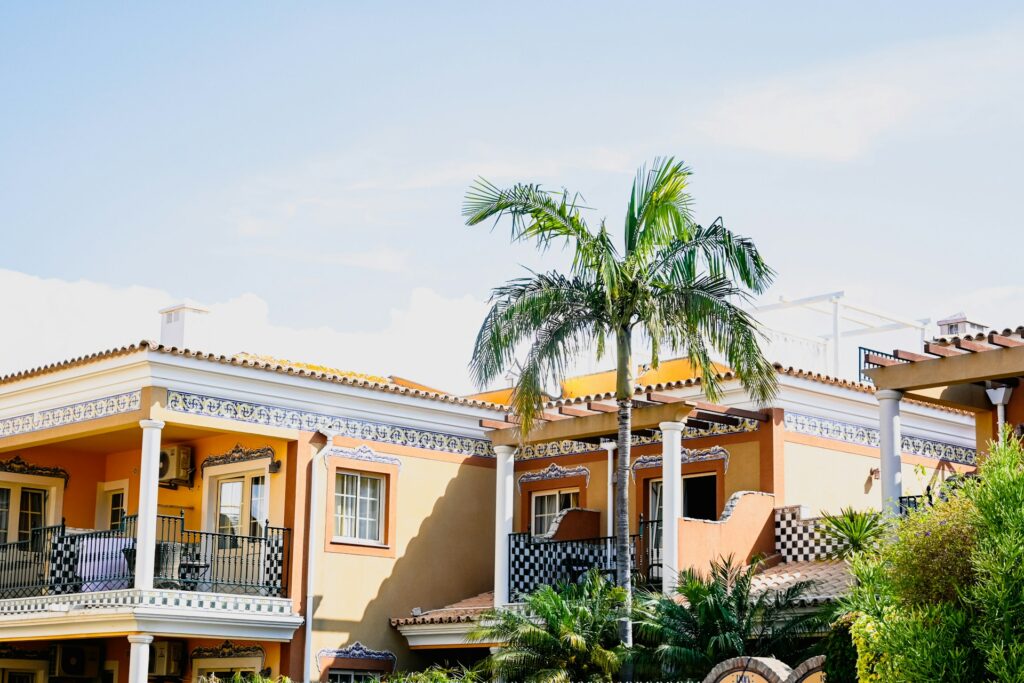
If you’ve ever seen a photo of Portugal’s southern coast, those honey-colored cliffs dropping into turquoise water, chances are, it was Lagos.
This little city is often called the crown jewel of the Algarve, and honestly, it earns it. Lagos gets more than 300 days of sunshine a year, which basically means endless beach days if you’re into that sort of thing.
Life here just feels slower. People linger over coffee. Strangers actually say good morning. And because there’s already a large English-speaking expat community, it’s one of the easiest places for Americans to settle in without feeling too out of place.
Now for the part everyone worries about: cost. The good news is that Lagos is surprisingly affordable. A single person can live pretty comfortably on around $1,800 a month.
That includes about $950 for a one-bedroom apartment in the city center, roughly $250 for groceries (fresh bread and local produce are cheap and excellent), and maybe $13 for a casual meal out, glass of wine included.
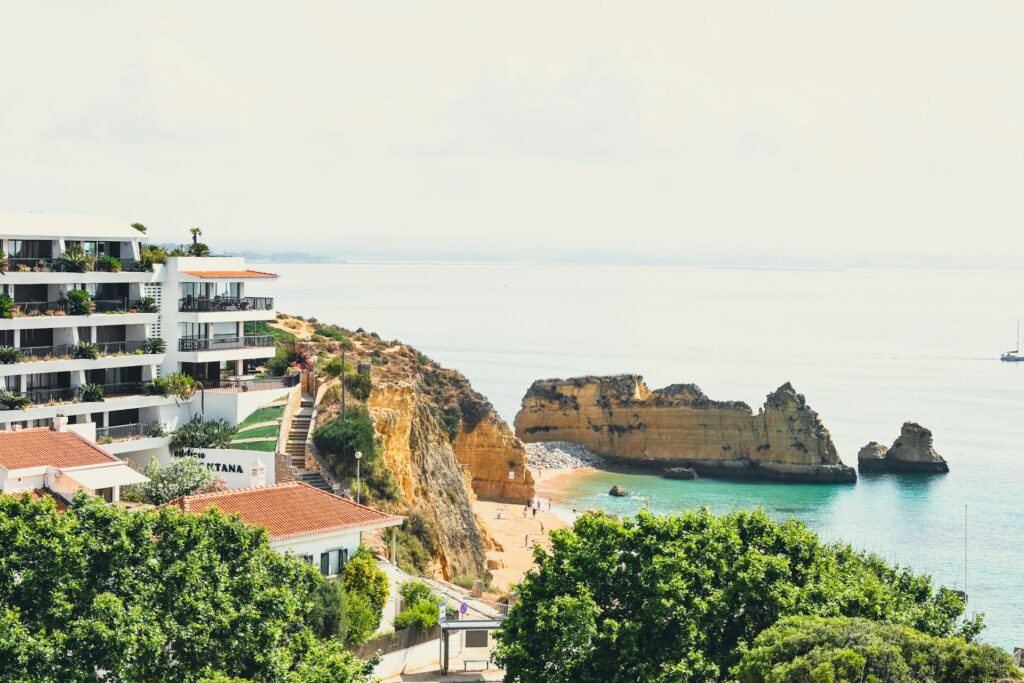
But here’s what really makes Portugal a standout option: the D7 Visa. It’s tailor-made for people with passive income, like retirees living on Social Security.
As of 2025, the minimum income requirement is just €820 per month, roughly $985. That’s well below the average monthly Social Security payment, meaning Lagos isn’t just beautiful — it’s realistically doable.
Healthcare’s another big plus. You’ll need private insurance at first (it’s a visa requirement), but once you’re a resident, you can join Portugal’s public healthcare system, and it’s both affordable and high quality.
So, if you’re dreaming of waking up to ocean views, afternoon walks on golden beaches, and the sound of church bells echoing through whitewashed streets… Lagos might be your spot.
Related: 11 Unexpected Things No One Tells You About Living in Portugal (The Good, Bad, and Shocking)
2. Coimbra, Portugal
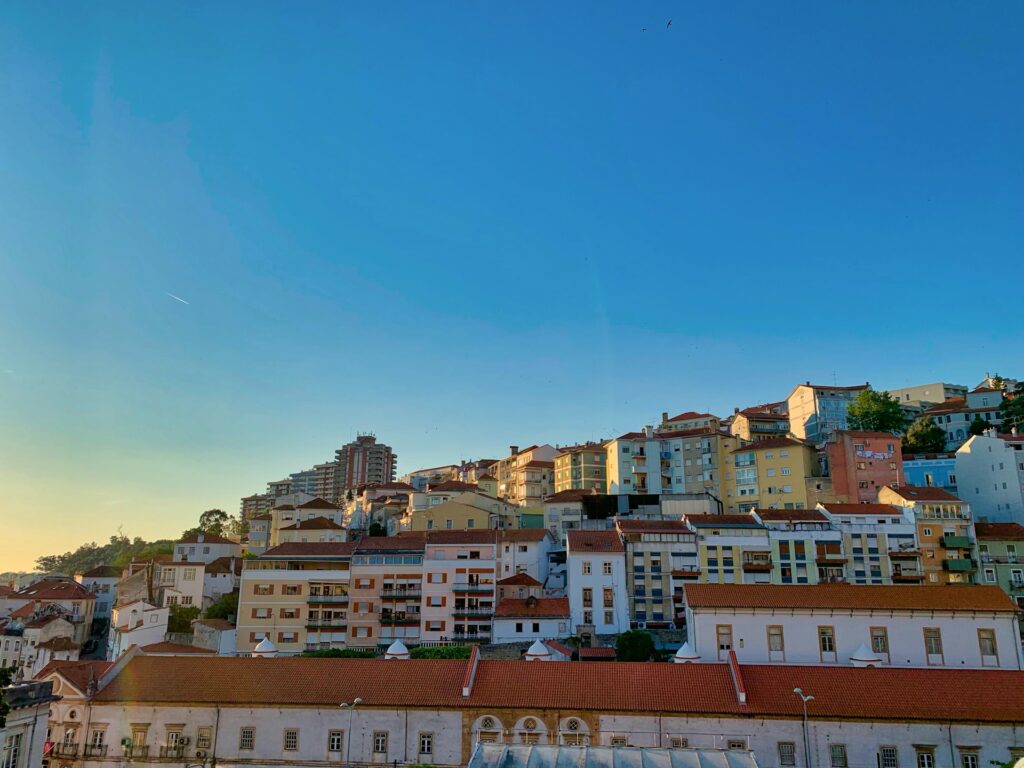
If beaches and crowds aren’t really your thing, Coimbra might be your perfect match. Tucked between Lisbon and Porto, this riverside city feels like stepping into a living history book, but one that still has great coffee and Wi-Fi.
Coimbra is best known as Portugal’s university town, home to one of the oldest universities in Europe. You feel it everywhere: in the winding cobblestone streets, the academic buzz, the bookstores spilling onto sidewalks.
Unlike the Algarve, Coimbra doesn’t run on tourism. It runs on community. People actually live here. Families, students, and retirees, and that makes daily life feel more authentic, less commercial.
You can spend your mornings at a café watching students rush to lectures and your afternoons exploring centuries-old architecture or relaxing by the Mondego River.
It’s also so affordable. You can rent a one-bedroom apartment in the city center for around €450 (about $480), which feels almost unreal compared to U.S. prices.
Monthly living expenses for one person hover around $700, and you can grab a delicious local meal for roughly €8, maybe even with a glass of wine if you know where to go. All in, you’re looking at about $1,250 per month to live comfortably.
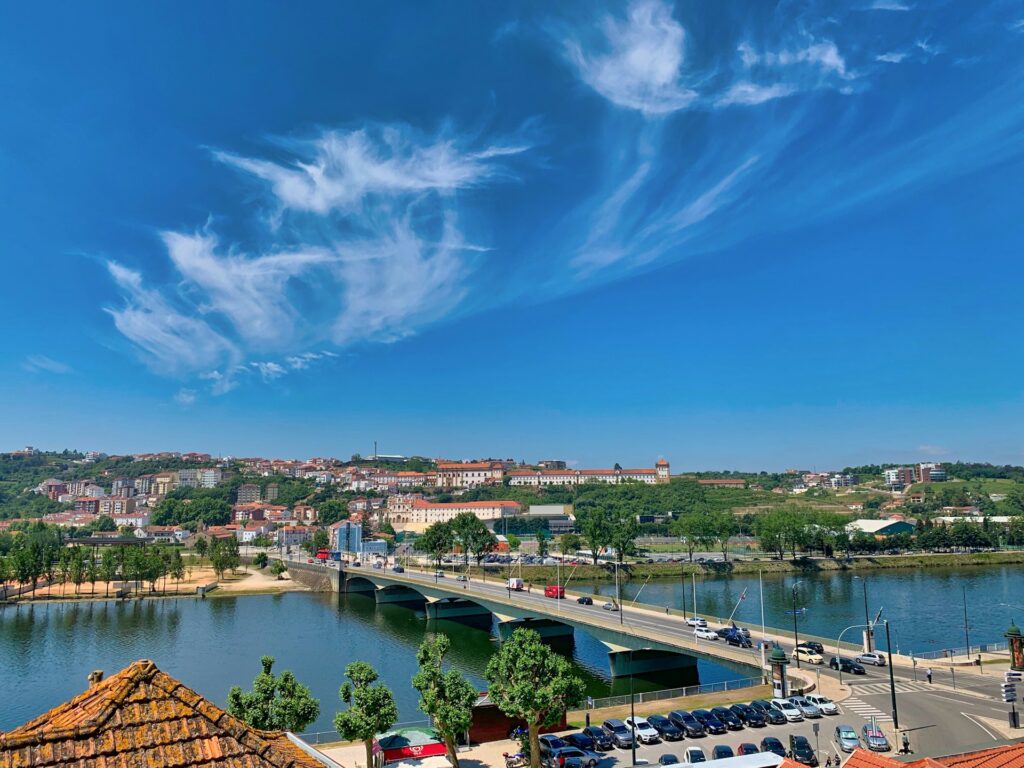
Like Lagos, Coimbra also falls under Portugal’s D7 Visa, designed for those with steady passive income, perfect for retirees living on Social Security. The minimum income requirement (around $985 per month) makes it one of the easiest European visas to qualify for.
So if your dream retirement includes history, culture, walkable streets, and café life without the high price tag, Coimbra checks every box: quietly, beautifully, and without the tourist chaos.
3. Valencia, Spain
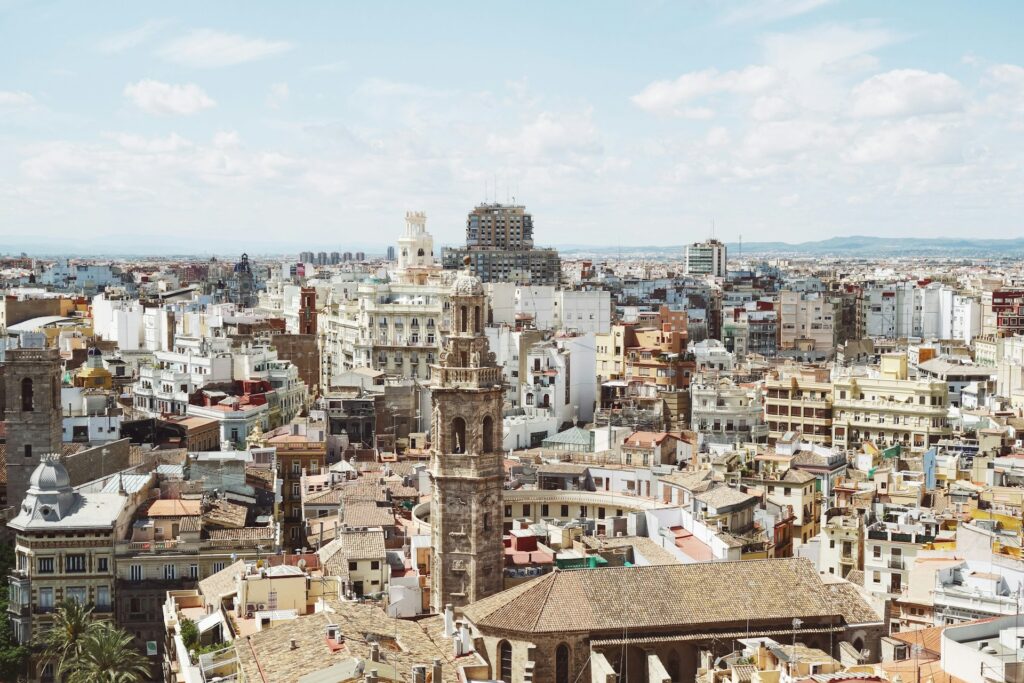
Valencia is one of those places that feels like it was designed for happiness.
The city hums with sunlight. You’ve got miles of sandy beaches, parks filled with orange trees, and paella that tastes like it was invented yesterday because, well, it basically was (Valencia is its birthplace).
There’s art everywhere: futuristic architecture, vibrant street murals, open-air festivals. It’s easy to see why so many people fall in love with it.
And day-to-day life in Valencia isn’t as expensive as you might expect. You can live quite comfortably on about $1,400 a month, even with rent for a decent apartment included. Groceries, dining out, and public transport, all very reasonable. On paper, it sounds like the ultimate Mediterranean retirement dream.
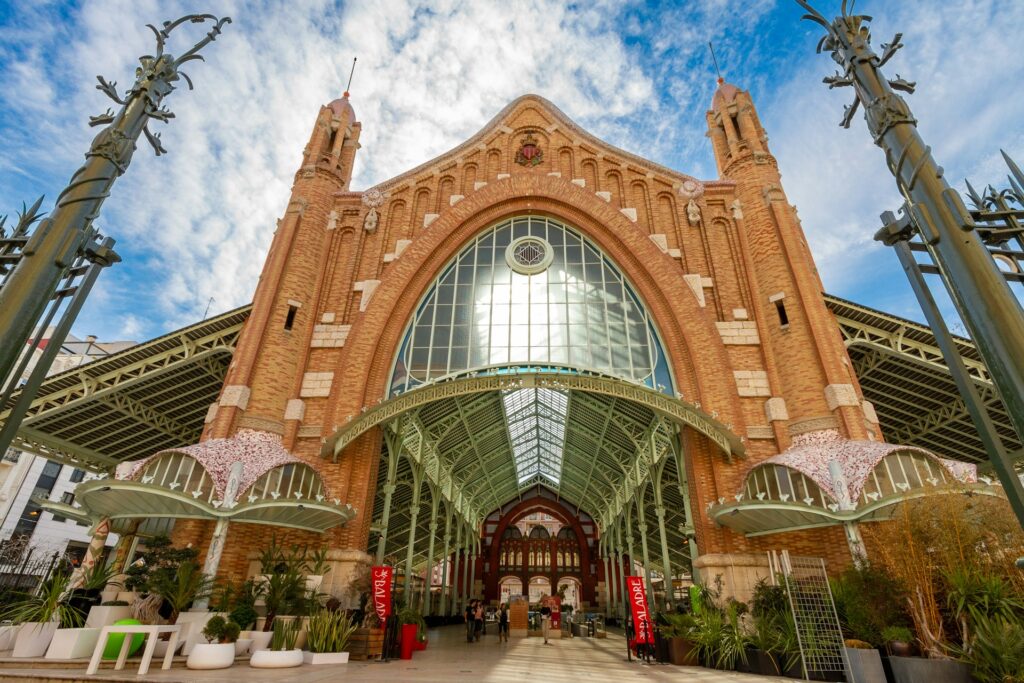
But (and it’s a big but) Spain’s visa system doesn’t make it quite that simple. To stay long-term, you’ll need the Non-Lucrative Visa (NLV), which is meant for people who can support themselves without working. You need to show a passive income of €2,400 per month (about $2,580). That’s well above the average Social Security benefit.
So while Valencia checks every lifestyle box, weather, culture, and affordability, it fails the easiest test of all: accessibility. For many single retirees, it’s out of reach on Social Security alone.
That said, couples who can combine their monthly benefits might clear the income bar comfortably. And if your benefit is higher than average, Valencia is still very much in play.
Valencia may be the dream, but sometimes the dream needs a little extra income to make it real.
Related Article: I’ve Lived in Spain for 5 Years — Here Are 10 Unspoken Rules To Follow When You Visit
Central & Eastern Europe: Rich History, Low Costs
This region offers some of the most affordable cities in Europe for retirees. Here, both the cost of living and the visa requirements are comfortably low, making for a straightforward retirement path.
4. Ljubljana, Slovenia
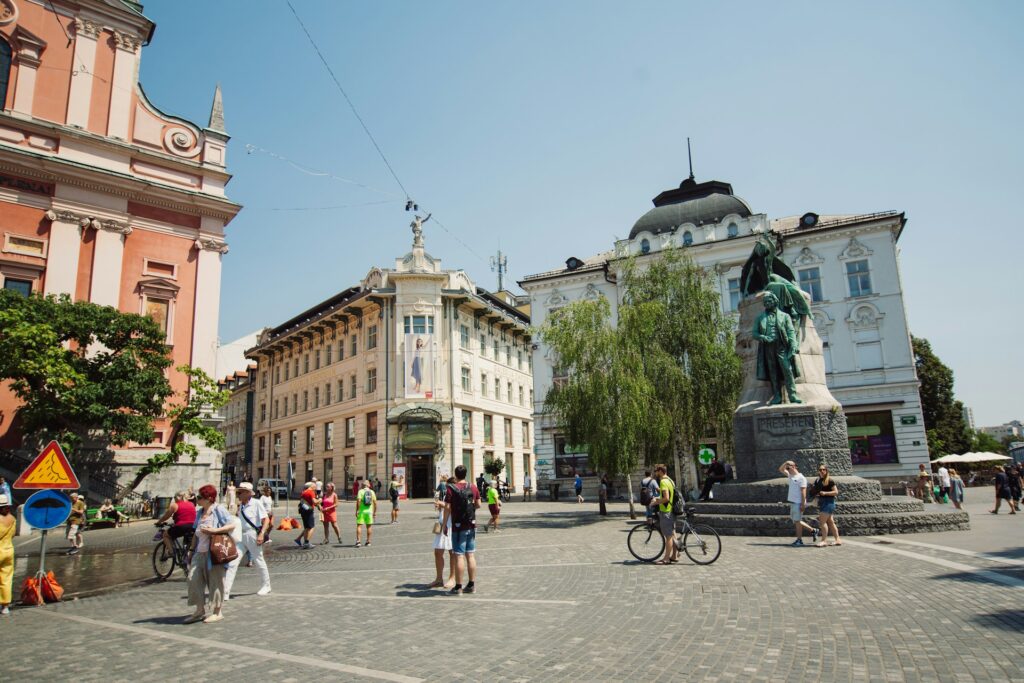
Ljubljana is one of Europe’s greenest and most livable capitals. It is known for its exceptional safety, fairytale charm, and relaxed pace of life. The city is clean, walkable, and full of beautiful architecture and riverside cafes.
Living costs are moderate. A single person’s monthly expenses are around $900 without rent. A one-bedroom apartment in the center costs about €850 (about $910). This brings the total estimated monthly cost to around $1,810.
Slovenia offers a temporary residence permit for non-EU citizens. The income requirement is tied to the country’s basic minimum income, which is currently around $1,000 per month. This makes it a very achievable goal for the average retiree.
5. Split, Croatia
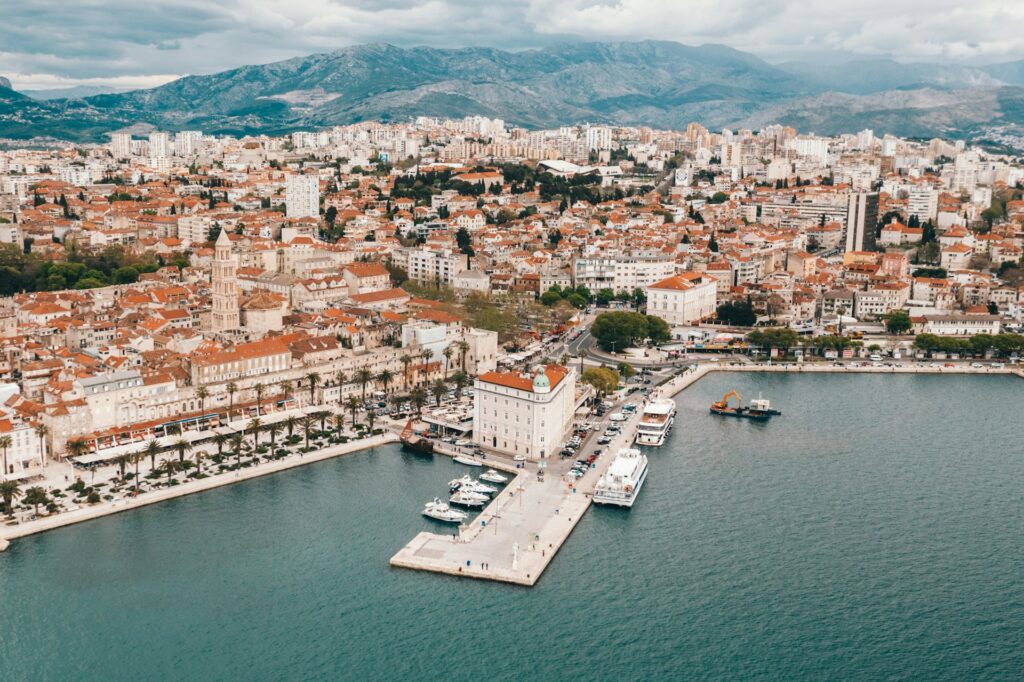
Picture this: mornings that start with a walk along the Adriatic, the sea so clear you can see straight to the pebbles beneath. Cafés spill out into narrow stone alleys, and every turn seems to reveal another piece of ancient history.
That’s Split, a city literally built inside the walls of a 1,700-year-old Roman palace. Diocletian’s Palace isn’t just a monument here; it’s part of daily life. People live, eat, and drink inside it.
You can spend one afternoon exploring ancient ruins and the next lounging on the waterfront with a coffee or glass of local wine. There’s also a growing expat community: digital nomads, retirees, long-term wanderers, all drawn to the same thing: a European lifestyle without the European price tag.
And that part is key. Living costs in Split are about 30–40% lower than in Western Europe. You can rent a one-bedroom apartment in the city center for around €740 (about $790).
Add roughly $750 a month for living expenses, groceries, local meals, transportation, and you’re looking at a very comfortable life for about $1,540 total per month. Not bad for a city that looks like it belongs on a postcard.
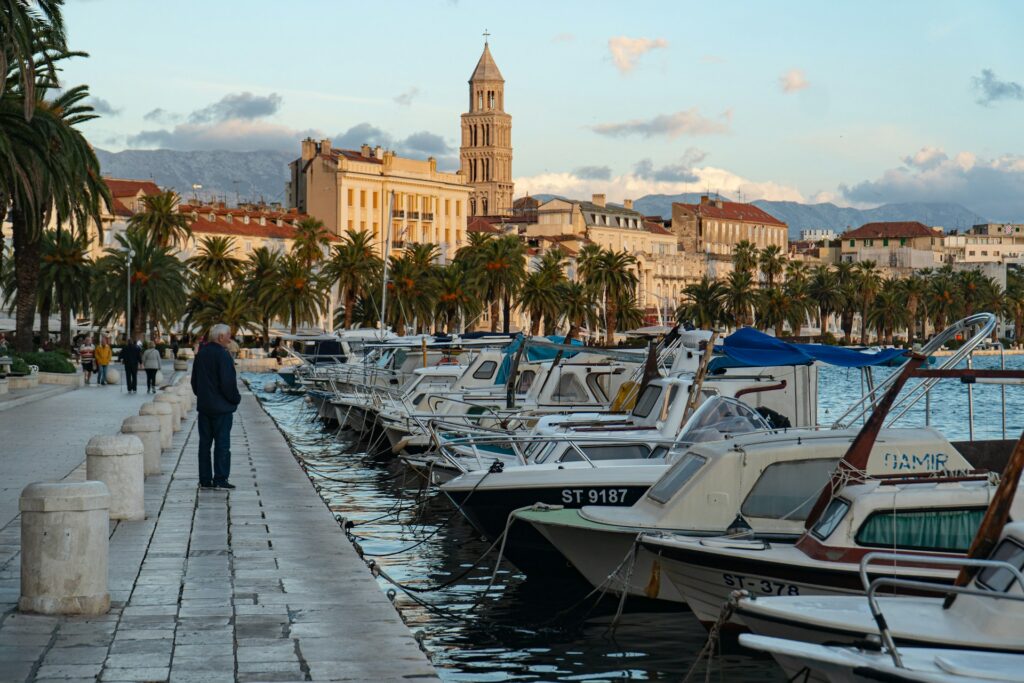
The paperwork side of things is surprisingly doable, too. Croatia doesn’t have a specific “retirement visa,” but U.S. citizens can apply for a one-year temporary residence permit under the category of “other purposes.”
It’s not as strict as Spain’s or Portugal’s visa systems. You just need to show that you have “sufficient funds” to support yourself. No rigid monthly income minimums, no unrealistic thresholds.
So if you’ve been dreaming of Mediterranean life, Split gives you all of it, minus the Eurozone-level costs. You can actually afford to live the dream here.
6. Prague, Czech Republic
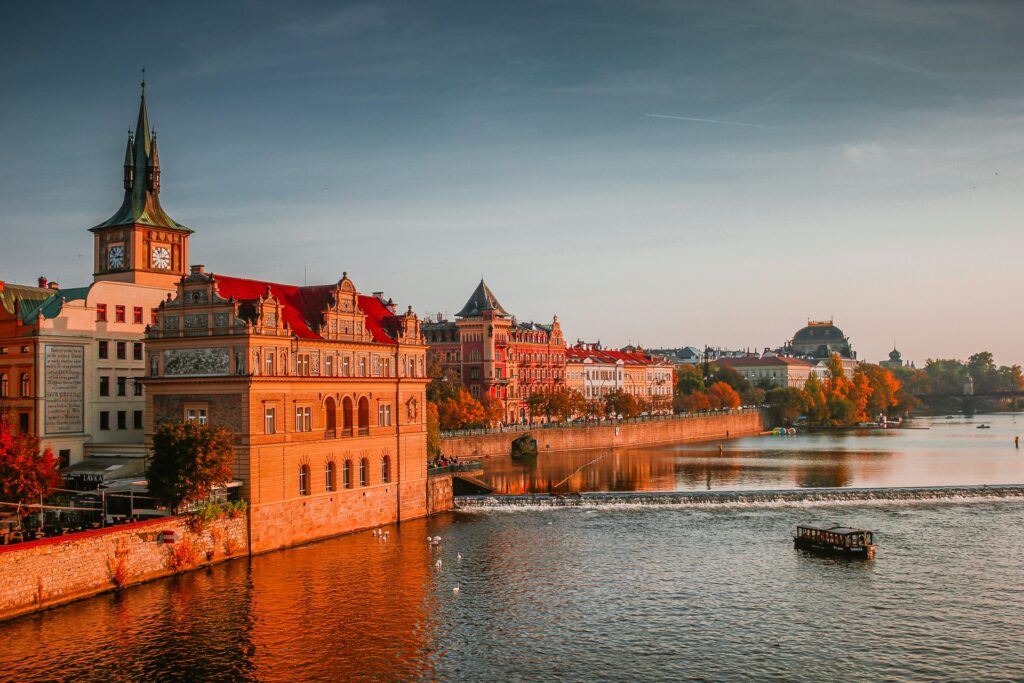
Prague is a city that seems straight out of a storybook. It features stunning architecture, a rich history, and excellent public transit. It consistently ranks high for safety and quality of life, with a large and active expat community.
A one-bedroom apartment in the city center averages around $820 per month. Monthly costs for a single person are about $850 without rent. This puts your total estimated monthly cost at around $1,670.
The Czech Republic’s long-stay visa is highly accessible. Instead of a high monthly income, it requires proof of savings. For a one-year stay, you need to show about 115,810 CZK (around $5,000) in a bank account. This one-time proof makes it an excellent option for retirees with some savings.
7. Krakow, Poland
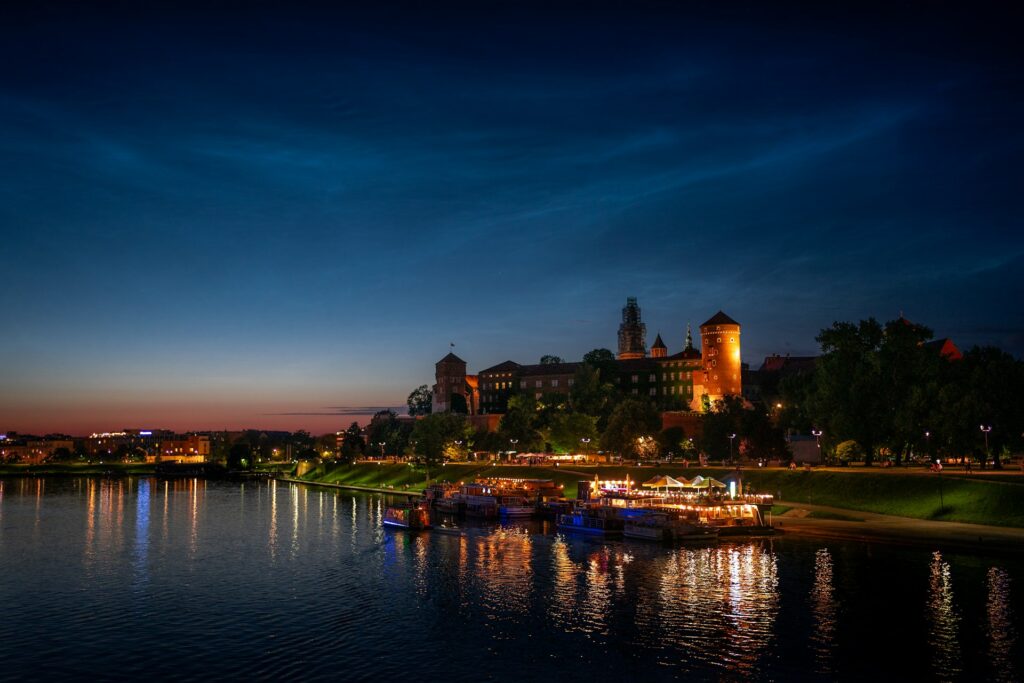
Kraków is a cultural powerhouse. Its historic Old Town is a UNESCO World Heritage site, and the city buzzes with energy from its lively squares, museums, and festivals. It offers a rich, engaging lifestyle for an incredibly low price.
A one-bedroom apartment in the city center rents for about 3,350 PLN (about $850). Monthly costs for a single person are around $750 without rent. This brings the total estimated monthly cost to about $1,600.
Poland’s temporary residence permit has one of the lowest income requirements in Europe. For a single person, you only need to prove a stable monthly income of 1,010 PLN, which is just $255. This makes Poland exceptionally easy to qualify for.
Beyond the Beaten Path: Unique and Budget-Friendly Havens
For those willing to explore less-traveled destinations, these cities offer incredible value and unique experiences. This is where you can truly retire in Europe on $2000 a month with money to spare.
8. Montpellier, France: The Sunny South Without the Saint-Tropez Price
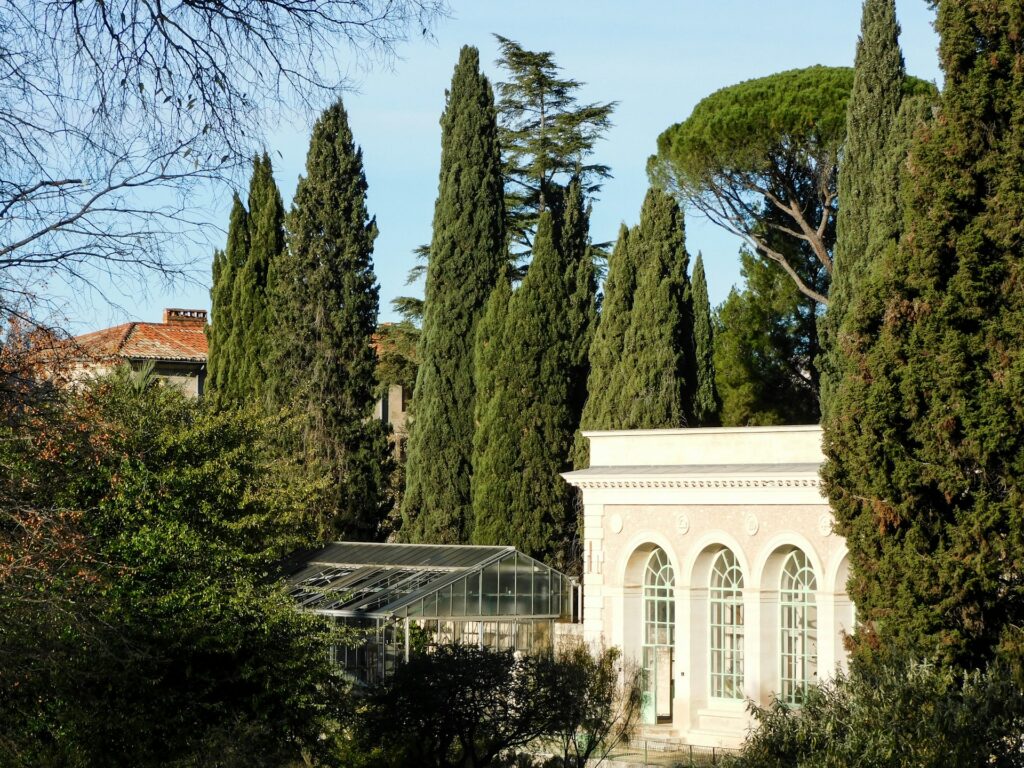
Dreaming of retiring in the South of France? Montpellier makes it possible. This vibrant, sunny university city is close to the Mediterranean and offers a wonderful lifestyle without the luxury price tag.
While France is generally more expensive, regional cities are manageable. A single person’s monthly costs are about $1,000 without rent.
A one-bedroom apartment in the center costs about €870 (about $930). Your total estimated monthly cost would be around $1,930, which fits snugly into a $2,000 budget.
France’s long-stay visitor visa requires proof of funds equal to the French minimum wage, which is about €1,400 per month (around $1,500). This is achievable on an average Social Security benefit.
9. Brasov, Romania
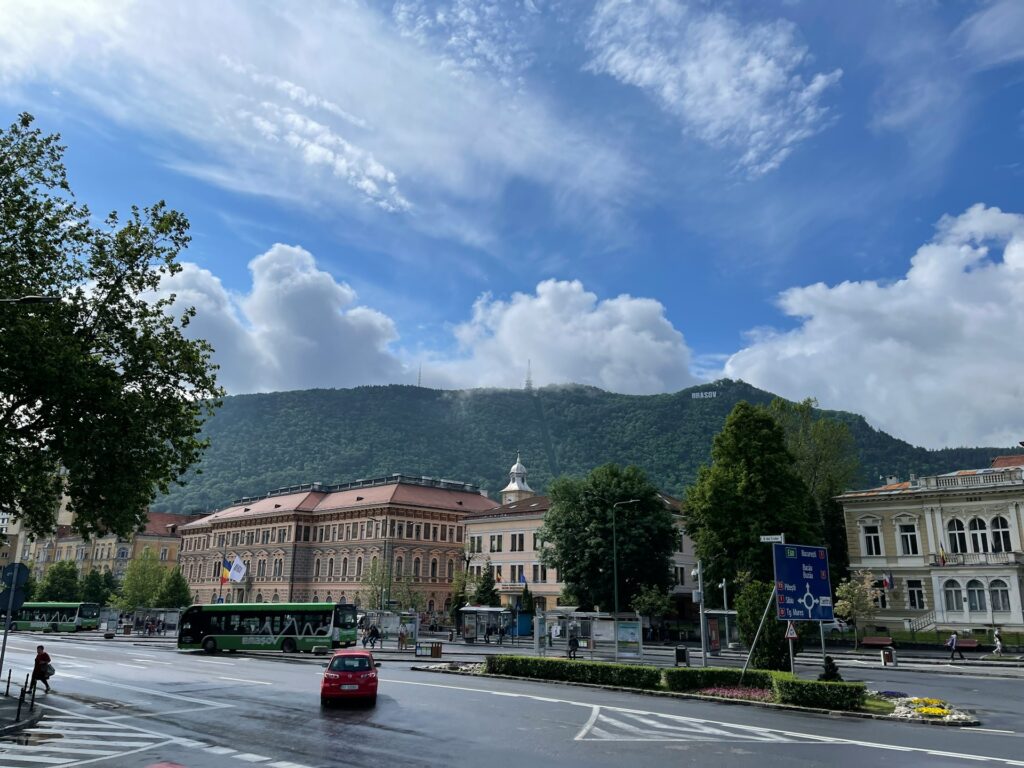
If you’ve ever dreamed of living somewhere that looks like it was pulled straight from a fairy tale, Brașov might be it.
Think Gothic spires, cobblestone streets, and cafés tucked beneath 14th-century towers, all surrounded by pine-covered peaks. It’s the kind of place where you can spend a morning hiking forest trails and your afternoon sipping coffee in a sun-drenched square, watching life unfold slowly around you.
The expat community here is small but growing, drawn by the low costs, the beauty, and, honestly, the slower pace that feels like a breath of fresh air after decades of busyness.
And yes, the affordability is real. A one-bedroom apartment in the city center rents for about €450 (around $480), and your monthly expenses (groceries, dining, utilities, the occasional treat) come to roughly $650. That brings your total living cost to around $1,130 per month, one of the lowest on this list.
As for staying long-term, U.S. citizens can apply for a temporary residence permit, which can be renewed. To extend it, you’ll need to show proof of financial means equal to Romania’s average gross monthly salary, projected to be about 9,002 RON (around $1,930) in late 2025.
It’s a bit tight for someone living solely on the average Social Security check, but not impossible, especially if your benefit is on the higher side or if you have a little extra income.
Brașov isn’t as polished or touristy as Western Europe, and that’s exactly what makes it special. You trade high prices for mountain views and a sense of peace that’s hard to find elsewhere.
10. Plovdiv, Bulgaria
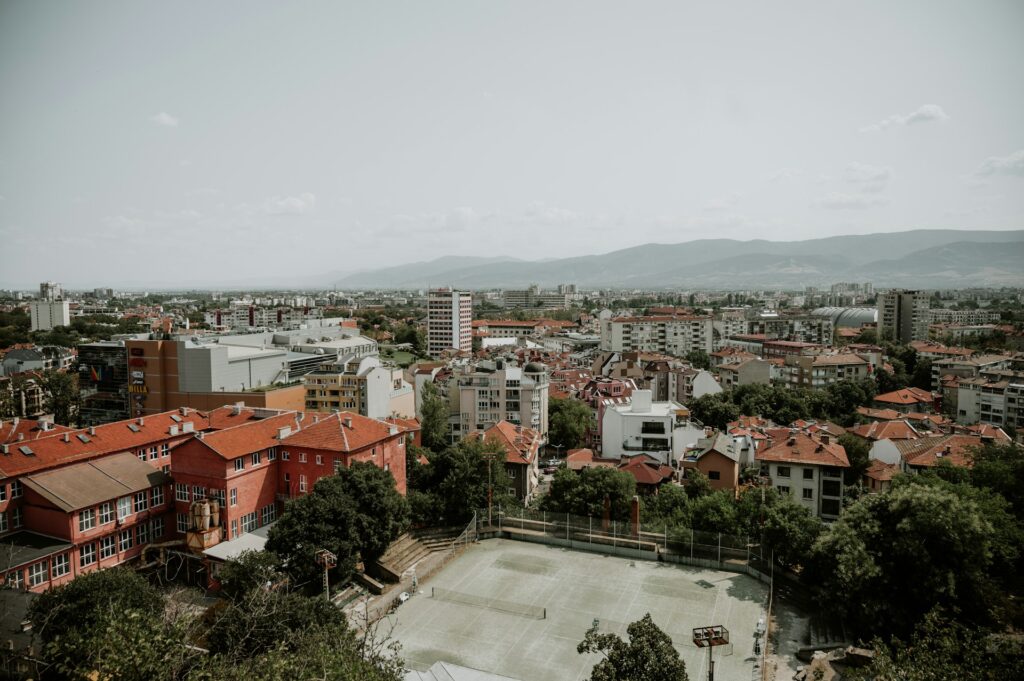
Plovdiv is one of those cities that sneaks up on you. It’s been inhabited for thousands of years, and everywhere you look, there’s a layer of history: Roman amphitheaters, medieval churches, Ottoman-era houses, and cobblestone streets that seem to whisper stories from centuries past.
And then there’s Kapana, the city’s artsy quarter, full of cafés, galleries, and craft shops, where locals and expats mix over espresso and street performances.
You can rent a one-bedroom apartment in the city center for under €400 (about $430). Add another $600 for groceries, dining, transport, and occasional nights out, and your total monthly cost comes to roughly $1,000. That’s one of the lowest living costs you’ll find in Europe!
Bulgaria makes retirement even easier with its Pensioner D visa. To qualify, you just need to prove that you receive a pension and have savings equivalent to 12 times the minimum Bulgarian pension, roughly $3,450, in a local bank account. It’s a simple, straightforward way for retirees to live abroad without jumping through hoops.
Also see: 10 Countries That Will Pay Americans to Move There in 2025 (Seriously)
11. Sarandë, Albania
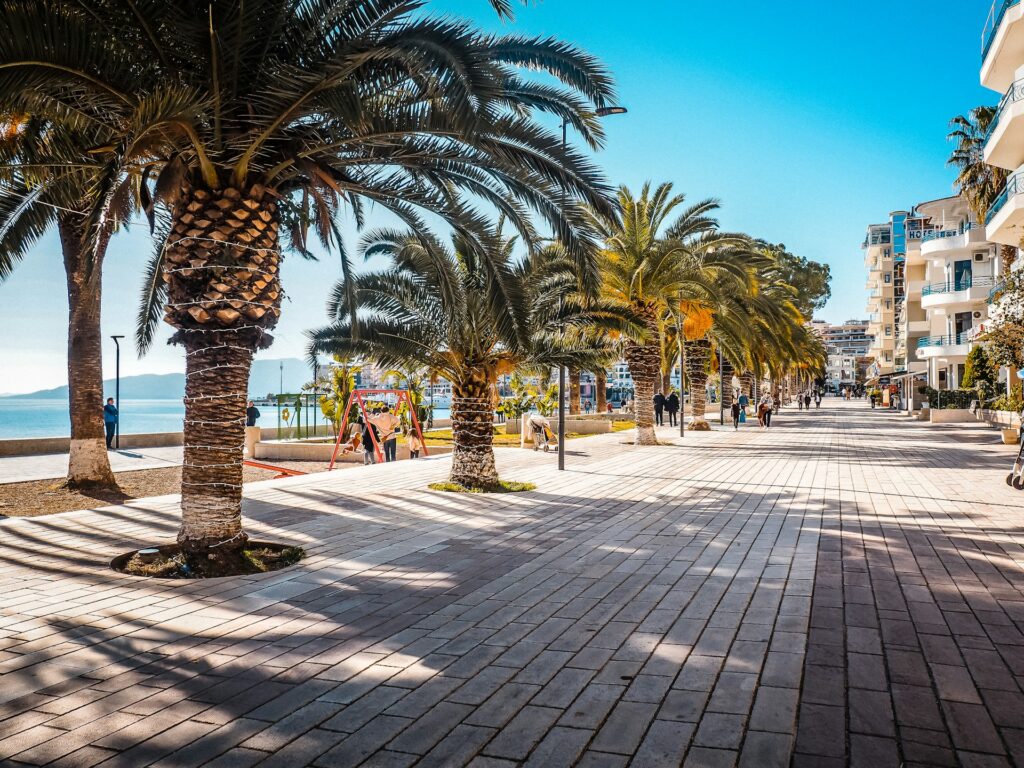
Sarandë is the kind of place that makes you wonder why more people haven’t discovered it yet.
Nestled on Albania’s Ionian coast, it’s a sun-soaked paradise with turquoise waters, pristine beaches, and ferry connections to the Greek island of Corfu. Think Mediterranean charm, but without the crowds or the sky-high prices of neighboring Greece.
Life here is incredibly affordable. You can rent a sea-view one-bedroom apartment for about $450, and your monthly expenses for food, transport, and daily living come to roughly $550. That puts your total monthly cost at around $1,000. Talk about Mediterranean retirement without breaking the bank!
Visa-wise, Albania is generous. U.S. citizens can stay up to one year visa-free, and for longer-term plans, there’s a retirement visa for those over 55. The requirement? A proven pension of about 120,000 ALL per month (roughly $1,245), comfortably within reach for most Social Security recipients.
Making the Move: A Quick Reality Check

Before you start daydreaming about cobblestone streets, sunny piazzas, or Adriatic sunsets, it helps to take a few practical realities into account.
Healthcare comes first. Many of these countries have public healthcare systems, but your visa application will almost always require proof of comprehensive private health insurance. That’s an upfront cost you need to plan for. And yes, it can be surprisingly pricey depending on your age and coverage needs.
Visas aren’t instant. Don’t assume you can just show up and start living your European dream. Applications can be slow and, let’s be honest, bureaucratic. Gather documents like birth certificates, background checks, and financial statements well in advance, sometimes months ahead. Most will need to be officially translated and apostilled, which can feel like a mini paperwork marathon.
Taxes still matter. Being a U.S. citizen means you’re not off the hook just because you move abroad. You’ll still need to file a U.S. tax return every year. It’s smart to talk to a tax professional who specializes in expat issues so you’re not hit with any surprises.
Your Golden Years Abroad
As you’ve seen, there are plenty of charming cities where Americans can comfortably live on Social Security, as long as you plan ahead and pay attention to the visa rules.
A relaxed, enriching, and budget-friendly European retirement is waiting for you. You just need to take the first step.
So, which of these cities is tugging at your heart? Drop your dream retirement spot in the comments. I’d love to hear where you’d choose to start this next chapter.